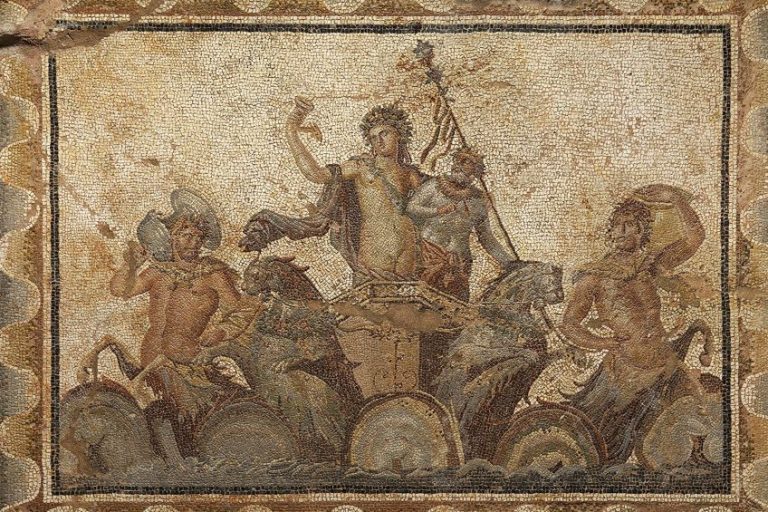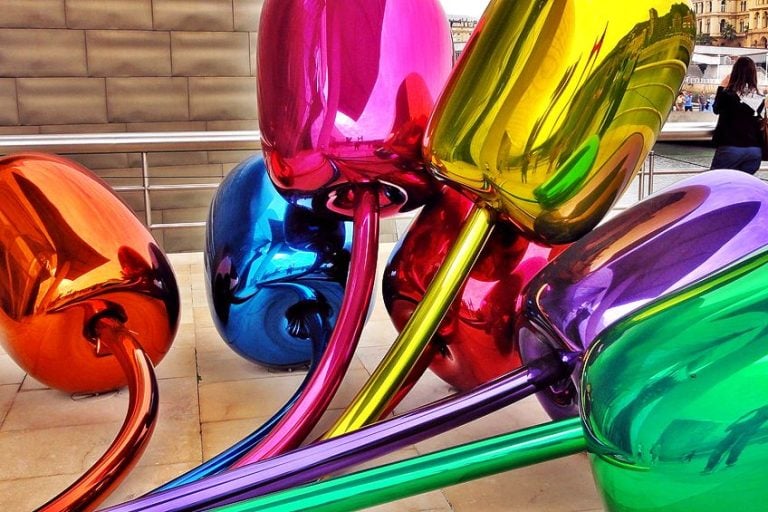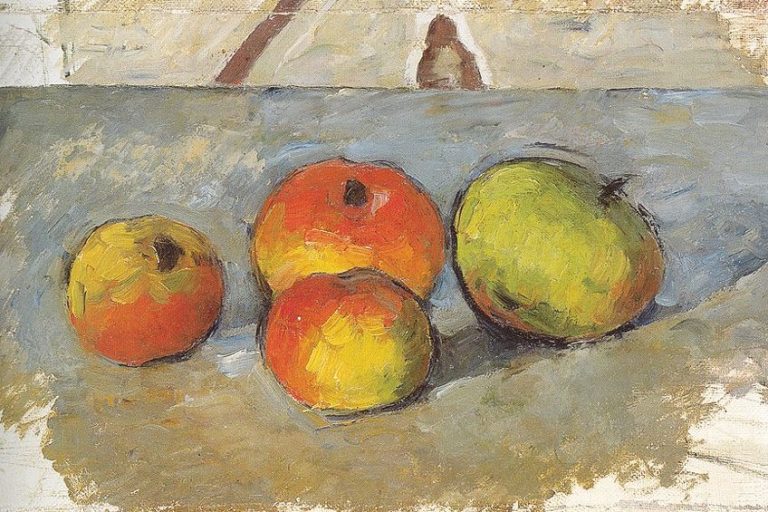Minimalist Art – An Exploration of the Minimalism Art Movement
Minimalist Art, or Minimalism Art, is a visual art and design movement focusing on the primary elements of an artwork. It focuses on the occupation of space around the art and how it interacts with the viewer and vice versa, leaving out any unnecessary elements. Minimalism started most notably in New York in the early 1960s, a post-World War II movement, in response to the subjective nature of Abstract Expressionism.
An Introduction to Minimalist Art
The Minimalism Art movement includes a variety of different art modalities like minimalist sculpture, interior design, and of course painting. It started in America in New York during the 1960s and 1970s, when some artists felt that the subjectivity of Abstract Expressionism was too complex a manner of portraying art.
Abstract Expressionism was considered too personal and expressive of the artist’s emotional state and inner world, and the literal application of brushwork depicted their inner state. Examples of this style of art can be found when looking at artists like Jackson Pollock, Franz Kline, and Willem de Kooning, who were the forerunners of Abstract Expressionism during the 1940s and 1950s.
A younger group of artists led the Minimalist Art movement. They turned away from the somewhat busy self-expressive nature of Abstract Expressionism by intentionally “including” less in their art, thus creating a more minimalist abstract art piece. The famous saying that “less is more” describes Minimalism art – whether more or less, however, there is certainly a lot more to this art movement.
Words that best describe minimalist ideas are reductionist, simplicity, clean, smooth, and almost anything that conveys the fundamental aspects of an art piece.
Frank Stella is a well-known artist, printmaker, and sculptor, he is known as one of the forerunners of the Minimalism Art movement. After graduating from Princeton University, Stella moved to New York City in 1958. He was involved in Abstract Expressionism, but was at odds with the subjective and metaphorical aspects of it. Stella worked as a house painter in his 20s and started using the paint and brushes to create his minimalistic art.
He believed minimalist painting was “a flat surface with paint on it – nothing more”, which depicted the literal color and shape on the surface without any other “hidden” meaning or symbolism seen in artworks from preceding art movements. His series called Black Paintings (1959) depicts this idea: It consists of a canvas with lines or bands of black paint across it in different patterns, with the white background from the canvas similarly depicted as lines or bands between the black.
Frank Stella was inspired by the works of other minimalist artists like Jasper Johns and Barnett Newman, whose artworks appeared flatter in its spaces. Donald Judd, another artist from the Minimalism Art movement, published an article titled Specific Objects in 1965. Along with Judd, other artists published various articles, for example, Robert Morris, who wrote Notes on Sculptures in 1966 and Sol LeWitt, who wrote Paragraphs on Conceptual Art in 1967.
The above-mentioned publications all sought to describe the style and nature of Minimalism and how to make minimalist art, from aesthetics and form, how a specific work of art is interpreted based on the conditions and context, and how the process of ideation and conceptualization is just as important as aesthetic appeal.
The Foundations of Minimalism Art
Although Minimalism became a dominant art movement in America during the 1960s, its principles and characteristics can be found in art movements and artworks from the 1900s, with other sources linking it to the Incoherents art exhibition in Paris in 1882. The exhibition displayed a painting by French poet and playwright, Paul Billhaud, entitled Combat de Nègres dans un Tunnel (‘Negroes Fight in a Tunnel’, 1884), appearing completely black in color and composition.
Similarly, Kazimir Malevich’s painting titled Black Square from 1915 also hints to early minimalist painting ideas, as it is literally a black square on a white background. Black Square was the first addition to a series of four different adaptations done by Malevich. About his specific work of art, Black Square, Malevich stated that “it is from zero, in zero, that the true movement of being begins”, shifting completely to the fundamental nature inherent in creating a work of art.

Other art movements like Bauhaus and De Stijl influenced minimalist artists, especially when works from these art movements were exhibited in New York. The Bauhaus movement originated in Germany in 1919. As an art school, it explored various minimalist painting ideas, crafts, design, and later architecture, focusing on ideas of functionality versus aesthetics.
The Dutch De Stijl art movement, which originated in the Netherlands in 1917, focused on the fundamentals of creating art by sticking to primary colors, including only blacks and whites. Additionally, artists primarily used the most foundational shapes and forms on horizontal and vertical planes.
Important Concepts in Minimalist Art
One of the most important characteristics of Minimalist art is that it is a revolt against the expressive and abstract nature of expressionist art, some even refer to it as rebellious in nature as it aims to completely convey the most simple and fundamental meanings of colors and shapes, in other words, it does not intend to make any other meaning other than just what is seen with the eye – there is no metaphor or higher meaning to the art or design.
Objective versus Subjective
The objective nature of art is brought to life versus the subjective nature; the artist’s personal interpretation takes a “back seat”, so to say, and the innate quality of the painting, shape, or form is the primary reason for being of Minimalist art. Words like “rejection” or “revolt” are clear identifiers of minimalist art, indicating its radical approach as one of the 20th-century art movements.
Monochromatic Colors
Another identifier of minimalist art is the use of color, adhering to monochromes and primary color palettes. This makes the artwork more neutral in its approach and the color does not become more than what it is. In other words, the colors are not used to convey personal expression, but to convey impact and the work as it is.
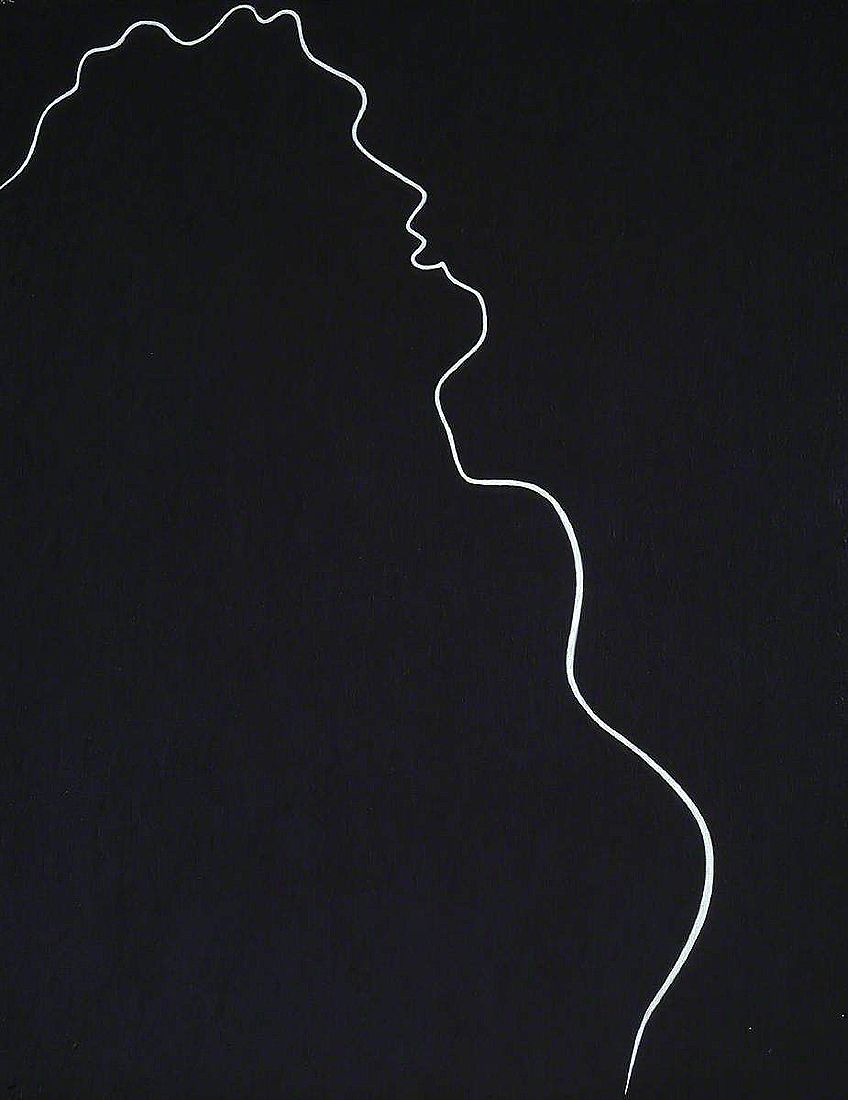
Geometric Shapes and Forms
Minimalism art is defined by geometric shapes, whether it is painted on a canvas or a piece of sculpture. Forms are often abstracted and not always aesthetically pleasing or sensical, but this all contributes to minimalism and how it moves away from the more traditional manner of making art and sculpture, which often tells a story, or as some would refer to it, a narrative.
Here, however, the form or shape does not aim to tell a tale and it is up to the viewer to determine the tale.
Commercial Materials versus Artistic Materials
Often, minimalistic art would be created with plain commercial paints, brushes, and various other industrial materials. This further elaborates on the tenets of Minimalism as not personal or expressive, but “what you see is what you see”, as Frank Stella so aptly stated about his art, and ultimately, the Minimalism Art movement itself.
Minimalist Art Representation in Styles and Media
Minimalist Art is represented in different styles, ranging from visual art, sculpture, interior design, installations, and architecture. Below, we discuss how this art movement presents itself in these modalities, including mention of prominent artists involved.
Visual Art
Visual art, or painting, has gone through hundreds of years of representation, but when it comes to Minimalism paintings, you will notice a world of flat two-dimensionality and geometric shapes, as if a three-dimensional object has been flattened onto the canvas. Often, these paintings are simple in their color schemes, but they create the illusion of depth and space, which in turn creates a whole new representation of art. You would want to assume there is meaning to the composition, but this would come entirely from your own preconceived ideas of art.
Ironically, although minimalist art was a rebellious response to Abstract Expressionism, many artists were involved, and drew on, inspiration from various artists’ paintings from Abstract Expressionism. An exampleof such a minimalist artist is Barnett Newman, who created compositions with color applied in a flat manner. Similarly, his brushwork did not follow the same patterns seen in many abstract paintings of the time.
Newman was also one of the forerunners in Color Field painting during the 1940s and 1950s in New York. This approach used color in a different manner, applying paint in larger, unbroken patterns or shapes instead of emotive brushstrokes informing the work. Minimalist artists like Frank Stella also drew on the proponents from the Color Field Movement, as the movements overlapped closely during that era.
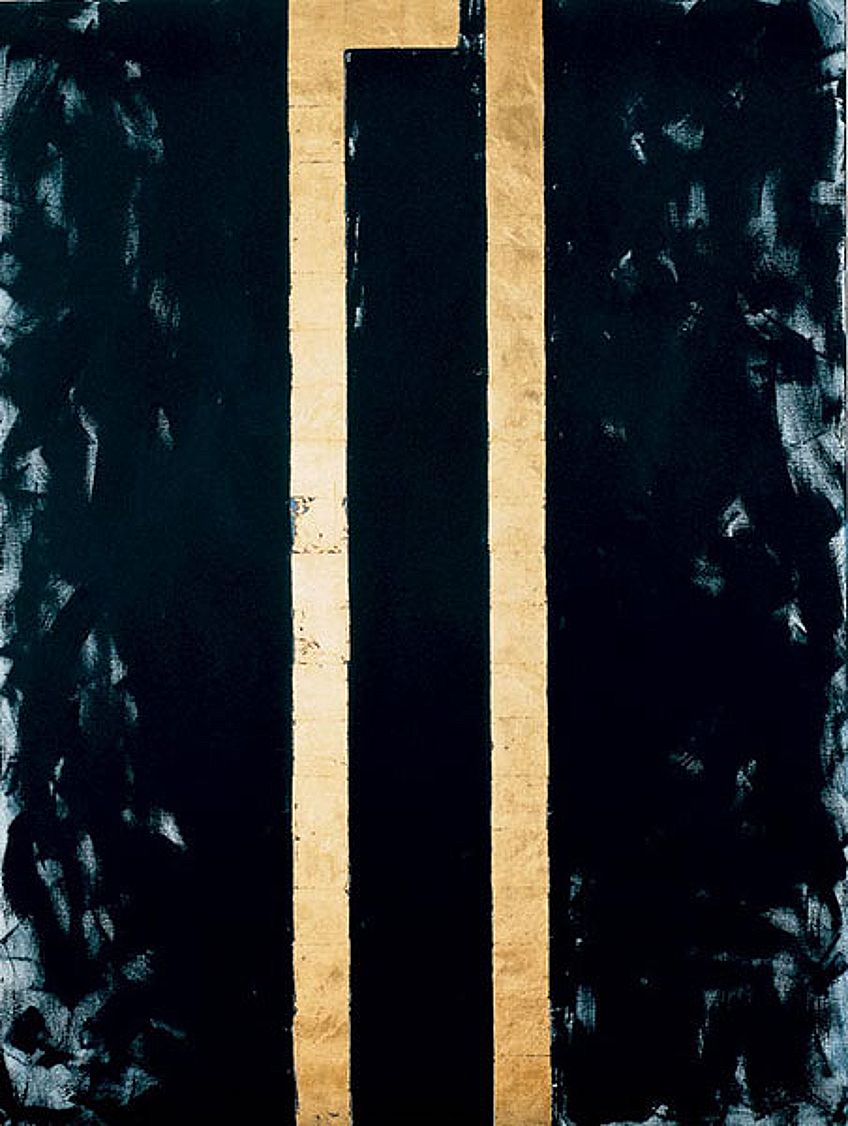
Sculpture
Minimalist sculpture is a large part of this movement, and the three-dimensionality of the objects are good examples of what this movement is all about. Primary characteristics of this is that objects are simple and completely fundamental in their shapes. For example, a cube is a cube, and minimalist artists sought to depict the object purely as the object was, and not give it any other meaning. Additionally, the artists played with the notion of how the onlooker would view the object in terms of its parts and how these make up the whole.
When you look at the example of the cube, the quote by minimalist Sol LeWitt comes to mind from one of his writings, where he said, “the most interesting characteristic of the cube is that it is relatively uninteresting”. Furthermore, a minimalist sculpture is an object that is independent of the artists that create it; in other words, it can stand alone and does not need the artist to give it meaning.
Minimalist objects come in different shapes and sizes, and a vast array of materials are used to create these. Artists often made use of plastics, metals like aluminium, woods like plywood, fiberglass, and even concrete, among others. Sculpture does not become sentimental and using materials that are widely available contributes to this fact.
However, there is one relationship that stands out in Minimalist Sculpture, and that is its relationship with the space it occupies. Some sources state that minimalist sculptures would often be on the floor or stand in the way. Thus, as impersonal as minimalist art is, there is a hint of intentional placing by some artists, and maybe this is merely to make a statement and nothing more? There is also interactivity, with some pieces made to be moved into different arrangements.
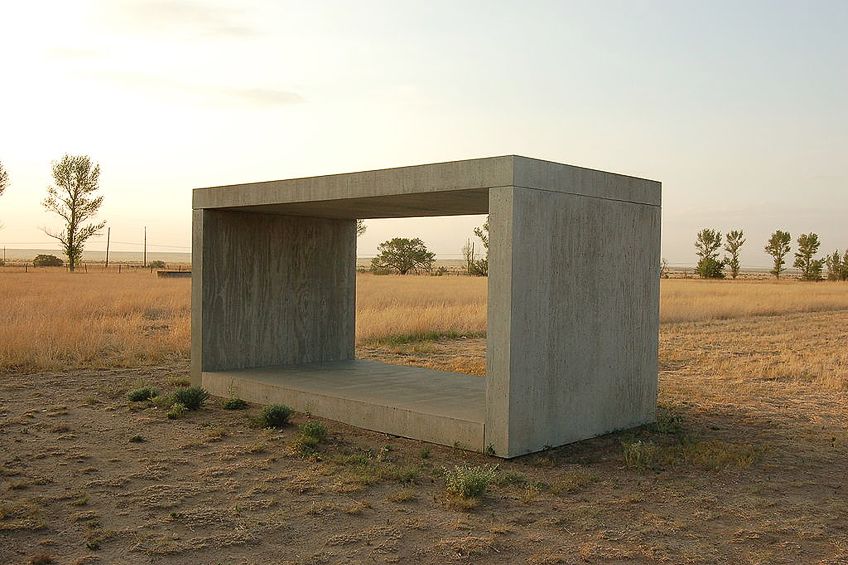
We will find this in examples from Carl Andre’s Lever (1966), which is a line of 137 firebricks all squarely placed next to each other and seemingly attached to the one side of the wall. Robert Morris’ Mirrored Cubes (1965) is another example of minimalist sculpture that occupies a space and allows the viewer to interact with it. Morris’ four cubes are placed equidistant from one another with enough room for viewers to walk through them and around them, and undoubtedly the reflections created by the mirrors adds to the effect.
This indicates again that minimalist art is simply a set of shapes, materials, colors, and textures with no inherent meaning other than what it is in the space it occupies. When the viewer interacts with it, it is then questionable as to whether or not meaning is created.
Interior Design
Following from the above, minimalist art and sculpture becomes a part of the space it is in. Thus, it can enhance a space using this quality within the realm of interior design. Depending on the shape and size of the work of art, or, as it also referred to, the object, it can fit almost anywhere in a room, lounge, or office – whether it is on the floor, on or against the wall, placed in a corner, or even on the fridge.
Because minimalist art is versatile and follows simplicity of form and color, it can add to the ambience of a space, making it either tranquil or more edgy, depending on the use of colors and shapes. Mostly, minimalist sculptures have clear, clean, and smooth lines, edges, and textures, which can equally complement other works of art in an interior space.
Installations
Installations in minimalist art can be seen primarily in the form of light installations, where artists play with how light affects the space it is in. Using fluorescent light tubes, artists would place emphasis on the light more than the tube itself to create an affect. Artist Dan Flavin used this technique in his series titled Icons in 1961, composed of shallow boxes with fluorescent light tubes along the sides and edges.
This is also seen in many of his other installations where he uses space to inform where and how his installation will fit. Flavin discusses his light installations in a documentary titled American Art in the 1960s, he says, “though the installation must look very stable, it’s easily understood with a slight confounding paradox, as the lamps operate out of the corners and with the corners”.

Architecture
Minimalism also applies to architecture, and as previously stated, was influenced by movements like De Stijl, which focused on using straight vertical and horizontal lines which were as simple as possible in form and shape, whether this was painting or architecture. Thus, minimalist art follows the ideas we see from De Stijl, among others. Minimalist architecture seeks to exclude all elements on a building that seem “extra”, and remain purely with only the essential elements that make the structure and give it its quality.
Minimalist architecture will often appear geometric in its shapes without decorations. Additionally, there will be a lot of repetition of shapes or forms, which is often referred to as “seriality”. This simply means placing the elements of an artwork or object in a series, where the primary aim for this is to convey simplicity.
This leads to a major influence of minimal architecture: the Japanese culture. Minimalism architecture has drawn on many of the notions that you will find in Japanese ideologies, which comes from concepts like harmony, beauty, and stillness. These are all applied in structures and aesthetics leading to the bare minimum, but purposefully so. German architect Ludwig Mies van der Rohe coined the term “Less is More” while describing the way in which he creates his architecture. He used only the essential aspects of a building, which in turn achieved functional and visual purpose.

Famous Minimalist Artists
There is a wealth of Minimalist artists, each unique in how they portrayed and placed their paintings, sculptures, and “objects” in the world. Below, we discuss only a few prominent artists who paved the way for Minimalism as an art movement. These artists are not only well-known for their minimalist abstract art, but also their contribution of radical new ideas and theories to art moving forward into the 21st Century.
Donald Judd (1928-1994)
Donald Judd was an American artist, art critic, and theorist. After serving in the army, he studied at numerous universities from 1948, receiving a bachelor’s degree in Philosophy and continuing his theoretical studies through a Master’s in Art History. Judd was a fervent believer that art needs to be independent of the artist, and the artwork’s interaction with its physical space or environment was a key characteristic of his work and philosophy.
Judd used industrial materials to make his art, for example, steel, Plexiglass, plastic, and iron. The combination of these materials created an impersonal feel of the artwork. This was also very different to the personal feel seen in Abstract Expressionism. Ironically, Judd did not consider himself a Minimalist, but instead pursued the importance of objects placed in their environment and how the environment itself informed the object.
Some of Judd’s artworks include his early piece titled Untitled (1968), which is an aluminium rectangle with brown enamel covering it and giving it its color. Although Judd created paintings, he was more drawn to sculpture, believing that space was more important than the space created on a canvas with paint. Judd’s other Untitled (1972) piece is another box-like shape made from copper with the inside colored completely red. Placed on a wooden floor, the coldness of the metal is changed to something more inviting and warm due to the reflection from the wood.
In Judd’s Untitled (1973) he created a series of six boxes, made from Plexiglass and brass, arranged next to one another horizontally, and equidistant from the other. The serial placing of shapes next to one another is a recurring theme in Judd’s pieces, and emphasizes his intention to create a certain movement from the interplay of the shapes, materials, and their colors.

Judd referred to his pieces as “specific objects” – in fact, his essay, similarly titled, sought to describe the nature of how to make minimalist art and how objects exist between the modalities of painting and sculpture, seemingly overlapping in their utilization. The term “specific objects” points to an object that is not referred to as a sculpture or painting, but merely an “object” created with a specific shape, alignment, and placement.
This shift in nomenclature is pioneering and a clear statement away from traditional concepts of naming artworks.
Sol LeWitt (1928-2007)
Sol LeWitt was born in America and studied a Bachelor of Fine Arts at Syracuse University in 1949. Additionally, his travels to Europe allowed him to experience the rich history of art and artists from centuries ago. After he served in the war, he opened his own art studio in 1953 in New York while studying at the School of Visual Arts. His education and career have predominantly been in the art space, ranging from clerking at the Museum of Modern Art (MOMA) to working as a graphic designer for I.M. Pei, a well-known architect.
LeWitt has been a notable artist not only in the Minimalist art movement, but also in Conceptual Art. Although he is known for his paintings, his sculptures and installations have dominated the art space, literally and figuratively. His structures vary in size and shape, although his influence comes from the shape of a cube, which is easily noticed when viewing his works.
LeWitt’s Wall Structure Blue (1962) depicts a small square within a larger square, which is also the shape of the canvas. Using oil painting for this work, LeWitt does not overindulge in colors and keeps the form as simple as possible. This work is considered a play on traditional works of art and the idea of convention, further emphasized by the red bulls-eye in the middle of the square.
Standing Open Structure Black (1964) is a structural example from LeWitt’s earlier installations. It hints at the bare minimum on a piece of artwork, only showing the framework, or as it is popularly referred to, the “skeleton”. We notice the recurring theme of the cube shape within this skeletal structure, as well as the fact that his piece is reminiscent of a human-sized shape, being 96 inches in height.
LeWitt would often use steel or aluminium, but also used cinder and concrete to create other installations. An example of this includes his work titled Cube from 1985, made of cement in the park of Basel, Switzerland. LeWitt believed in the process of the idea of a piece of art, and explored the connection between the idea of an artwork and how it related to the artist. More than this, he believed that the idea was one of the primary parts of an artwork.
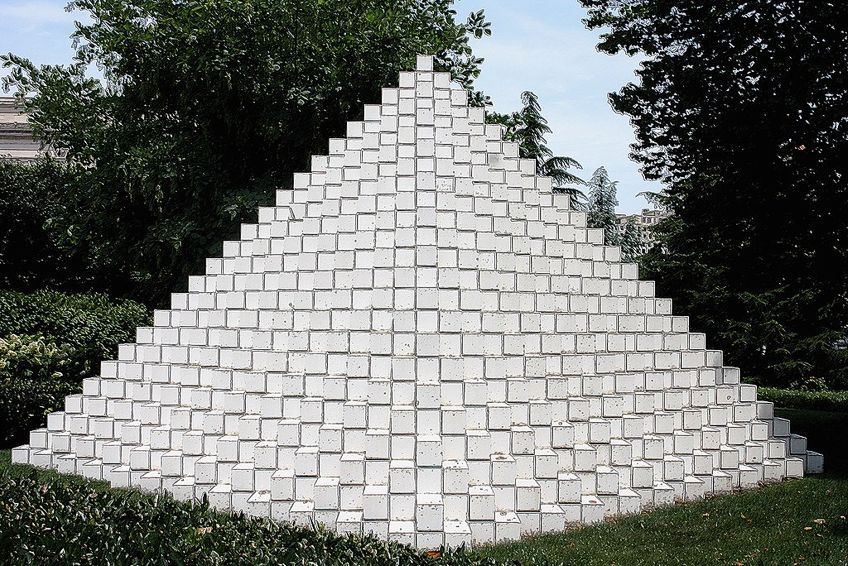
Robert Morris (1931-2018)
Robert Morris was born in Kansas, but lived most of his life in New York. He was a multi-platform minimalist artist and considered a key minimalist theorist. He specialized in sculpture, conceptual art, installations, and various other forms of art like Land art and Process art. Morris’ education ranged from having studied Engineering, Art, and Philosophy at different universities in Kansas and Oregon.
Morris’ sculptures explored simple geometric shapes on a large scale, such as cubes and different rectangular forms. The viewer became a part of the process in terms of how they interacted with the artwork, especially when walking around a large piece. Robert Morris wrote an essay in 1966 titled Notes on Sculpture, which explores the above-mentioned process of viewing and interacting with a structure, and how it is “intuitively” interpreted by the viewer.

Box with the Sound of Its Own Making (1961) is a wooden cube, or box, with a recording of the sounds of how it was made: The recording lasts for three-and-a-half hours. This particular piece illustrates and demonstrates the simplicity and fundamental nature of a piece of artwork, coupled with the process of how it was made.
Another piece by Morris is his Untitled (L-Beams) of 1965, which consists of three L-shaped structures similar in size and arranged in different positions. The three structures are plain and simple in the material and shape, with no particular meaning other than just being three wooden pieces arranged alongside one another, and are thus exemplary of the nature of minimalist art and the relationship between artist and artwork.
Dan Flavin (1933-1996)
Born in Jamaica, New York, Dan Flavin grew up attending Catholic Schools and would go on to serve in the United States Air Force with his brother during 1954 to 1955. During this time, he studied art at the Maryland University in Korea, and continued to study art at the Hans Hofmann School of Fine Arts in New York in 1956. He also studied art history at the New School for Social Research and Fine Art (painting and drawing) at Columbia University.
Flavin was also influenced by the ideas of Abstract Expressionism, and he explored the use of different media, often using cans from the street to include in his collages. Flavin is well-known for his installations, specifically using fluorescent and incandescent light bulbs. His Icons series depicts eight square shapes, which he made from different types of wood with light bulbs along the sides.
Other key works include his Diagonal of Personal Ecstasy (The Diagonal of May 25, 1963), which depicts a yellow fluorescent light tube almost extending from the floor at a diagonal angle onto the wall, seemingly growing like a vine, but in this case, it is a light. This work was in honor of Constantin Brâncuşi, a Romanian painter and sculptor and forerunner of modern sculpture.
Flavin’s light installations explore the interrelationship with space, color, and light, and he used this interplay of media in different locations in a gallery space, including assembling different shapes. Other examples of this include his Greens Crossing Greens (1966), portraying an assemblage, or as Flavin used to refer to it, a “barrier”, of fluorescent tubes that appear as large green fences intersecting one another.
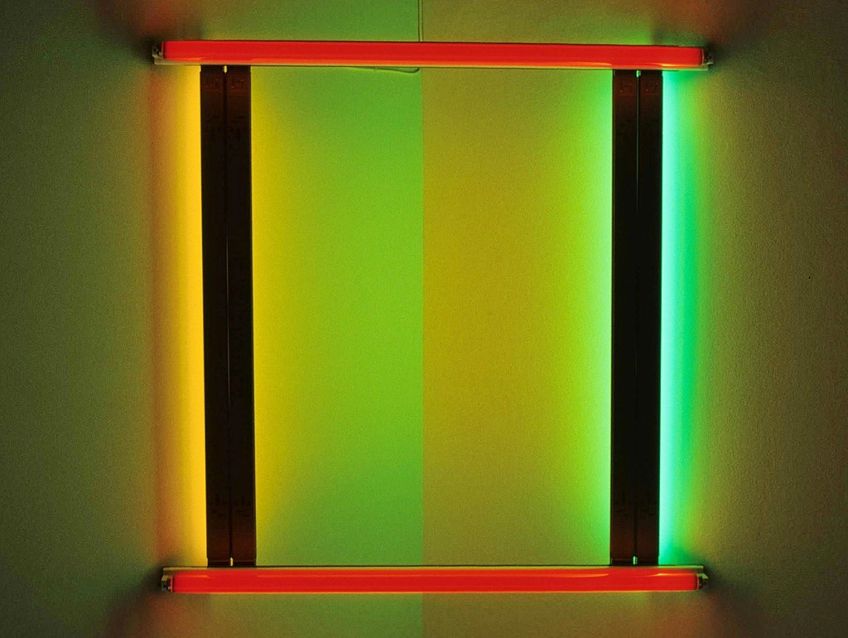
Carl Andre (1935 to Present)
Carl Andre is an American sculptor and artist. He studied at the Phillips Academy in Andover and after serving in the army, he relocated to New York in 1956. He is well-known for his sculptures that appear grid-like and linear in structure. His geometric patterns are usually created to be on the floor, becoming the artwork’s platform or plinth, and entices viewers to engage with the work in a different manner than the more traditional way of looking at a painting or walking around a structure.
Andre refers to himself as a “matterist” because of his wide use of different matter and his exploration of the essence of each type of matter he uses, ranging between bricks, plates, ingots, and various industrial-based materials. The method Andre uses to create his structures is more like the process of construction, and he creates these structures according to the environment they are in, which, in turn, informs its size and shape.
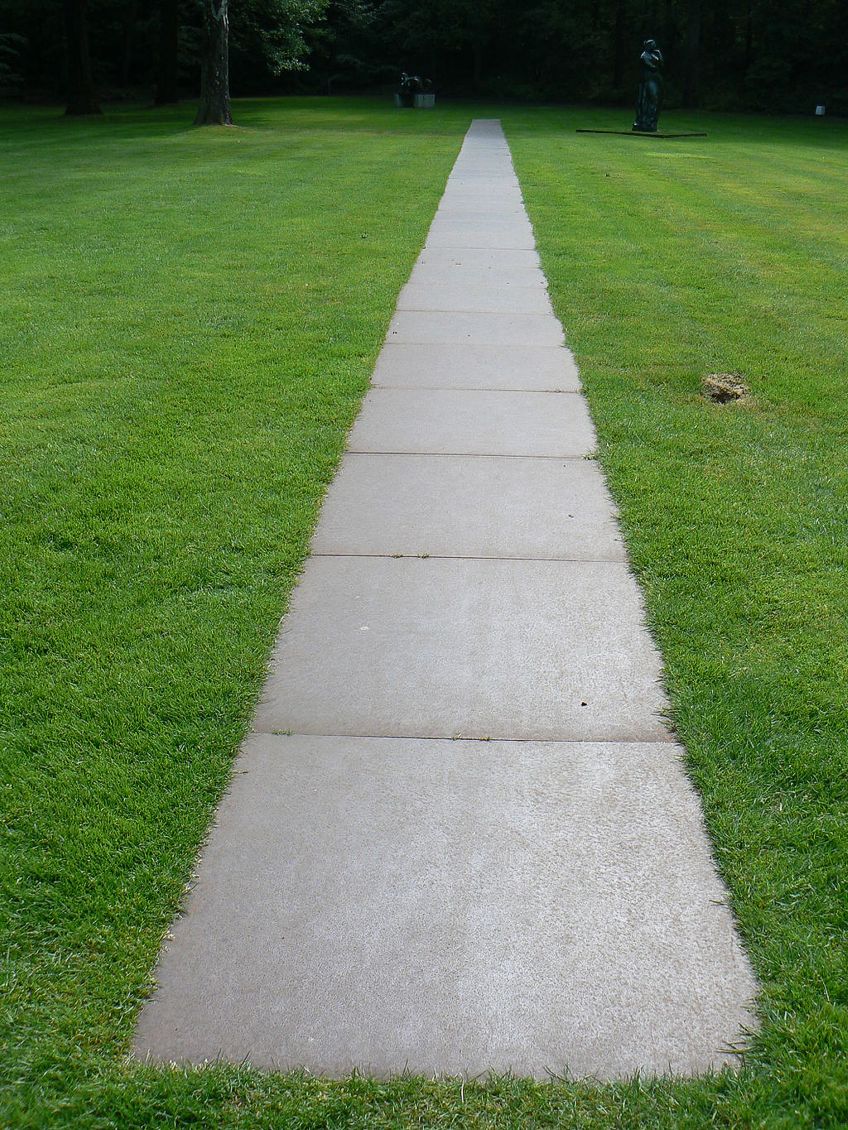
Frank Stella (1936 to Present)
Frank Stella is an American artist specializing in painting, printmaking, and sculpting. He graduated from Princeton University with a major in History. He is well known for his involvement in Minimalism, but has also been a part of the Post-Painterly Abstraction exhibit by Clement Greenberg, which emphasized more open and clear surfaces as opposed to the seemingly congested surfaces characteristic of the Abstract Expressionist movement.
Although influenced by Abstract Expressionists like Jasper Johns and Barnett Newman, when he moved to New York in 1958, Stella’s abstract artworks did not have the same metaphorical and metaphysical undertones that many Abstract Expressionists imbued in their works. Some of his key artworks have been his Black Paintings (1959) series, for example, Die Fahne Hoch! (1959), which means “The Raised Banner”.
During the 1960s, Stella introduced more colors to his palette, as well as a play on different curves and shapes of canvases. He started using copper and aluminium paint and used canvases in other shapes like U or L-shapes. An example of this is his Irregular Polygon and Protractor series, which was inspired by the circular cities in the Middle East where he visited.
Minimalist Art Beyond the 20th Century
Post-Minimalism emerged in the late 1960s and early 1970s, and the term was introduced by art critic and historian Robert Pincus-Witten. As much as it was a reaction towards some of the tenets of Minimalism, it did incorporate elements and influences from the movement. Artists created diverse works of art, some with a more intentional emphasis on the traditional, expressive nature of art, and some completely impersonal in their material representation.
As everything comes to an end, so did the Minimalist Art movement during the later stages of the 1960s. Many artists continued to evolve along their unique artist’s journeys and did not prescribe to remaining within a particular art movement. However, this did not stop what minimalism in art meant, and ultimately it created new foundations and a springboard for art and artists going into the 21st Century, reaching many other art forms including music, literature, and film.
Frequently Asked Questions
What Is Minimalist Art?
Minimalist Art, otherwise referred to as Minimalism, emerged as an art movement during the early 1960s into the early 1970s. It consisted of a group of younger artists, as well as older, primarily based in New York City. It came about as a reaction to the more expressive, metaphysical nature of its precursor, Abstract Expressionism. Therefore, it is also referred to as minimalist abstract art due to many artists also being influenced by Abstract Expressionism.
What Is the Meaning of Minimalism in Art?
Minimalism in art refers to the move away from traditional notions that art needs to mean something more than what it is. Viewers are encouraged to see the artwork for what it is and how it occupies a space. Oftentimes, minimalist artworks are created with simplicity and minimal shapes and lines, reducing the work to only its essential qualities.
What Qualities Define Minimalist Art?
Characteristics of minimalist art focus more on utilizing monochromatic colors. These are usually only one or two colors, including a dominant use of blacks and whites. Included are various geometric shapes like squares and rectangles placed alongside one another in repetitive sequences, which is known as seriality. Other qualities are the placing of “objects” on vertical and horizontal planes, often including the floor instead of plinths, and using industrial materials like wood, metals, plastics, concrete, as well as lights.
Isabella studied at the University of Cape Town in South Africa and graduated with a Bachelor of Arts majoring in English Literature & Language and Psychology. Throughout her undergraduate years, she took Art History as an additional subject and absolutely loved it. Building on from her art history knowledge that began in high school, art has always been a particular area of fascination for her. From learning about artworks previously unknown to her, or sharpening her existing understanding of specific works, the ability to continue learning within this interesting sphere excites her greatly.
Her focal points of interest in art history encompass profiling specific artists and art movements, as it is these areas where she is able to really dig deep into the rich narrative of the art world. Additionally, she particularly enjoys exploring the different artistic styles of the 20th century, as well as the important impact that female artists have had on the development of art history.
Learn more about Isabella Meyer and the Art in Context Team.
Cite this Article
Isabella, Meyer, “Minimalist Art – An Exploration of the Minimalism Art Movement.” Art in Context. April 7, 2021. URL: https://artincontext.org/minimalist-art/
Meyer, I. (2021, 7 April). Minimalist Art – An Exploration of the Minimalism Art Movement. Art in Context. https://artincontext.org/minimalist-art/
Meyer, Isabella. “Minimalist Art – An Exploration of the Minimalism Art Movement.” Art in Context, April 7, 2021. https://artincontext.org/minimalist-art/.




